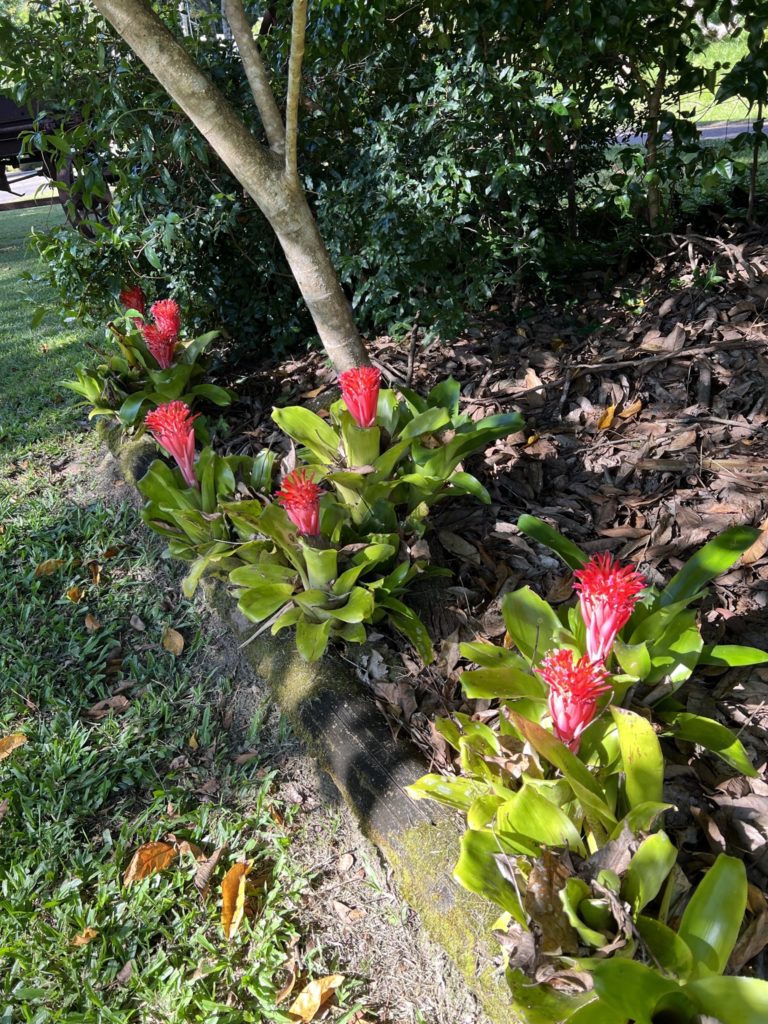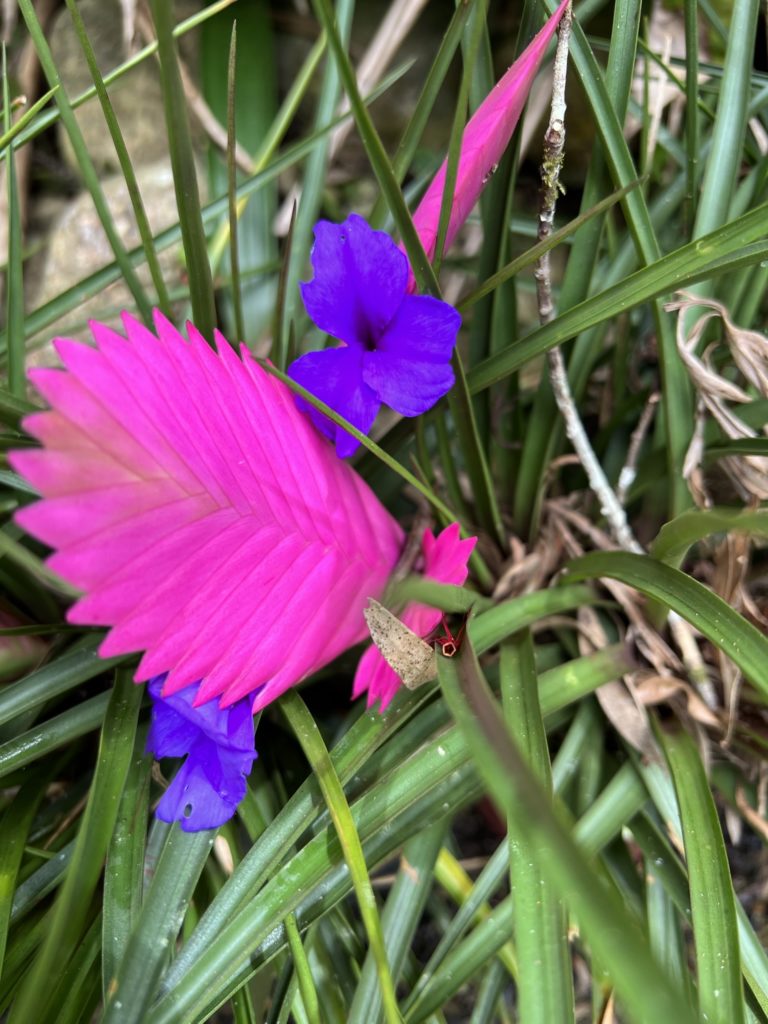Over the last month or so, one of the consistently flowering plants in my garden, as well as other gardens in the village has been bromeliads.
Broms belong to the family Bromeliacea which includes “air plants” in the genus Tillandsia. They come in an amazing range of colours (on both the flowers and leaves) and flower shapes. They can grow anywhere from full sun to deep shade and in wet and dry habitats.
In Paluma they are great plants for “mature” gardens with a full shady canopy that restricts the number of brightly flowering plants that can grow in the gloom. Currently one of my favourite broms is blooming throughout the village. Bilbergia pyramidalis, like most bromeliads, comes from South America. Its common names (flaming torch and foolproof plant) are certainly apt. It has a stunning large red and purple flower and it tends (at least in my garden to bloom during only a short few days in March when the effect in mass plantings is quite spectacular.


This year the blooming period seems to be less synchronous and more prolonged, perhaps due to the lack of a “proper” wet season.

This species grows prolifically in semi-shaded to fully shaded areas and it is dead-easy (fool proof) to grow and propagate. I have created a living boundary “fence” along one side of my garden by heaping up my endless supply of branch timings and then just tossing B. pyramidalis onto the top of the pile. Three to six months later it formed a living cover and a spectacle of colour once a year thereafter.

A living and flowering border fence
Another stunning relative of the bromeliad that has just finished flowering is the Pink quill (Tillandsia cyanea).
Tillandsias are also called air plants since they can grow epiphytically on tree trunks or rocks without any soil. T. cyanea is different in that it prefers to grow in a small pot of well drained soil. It produces 2-4 “pups” each year so it doesn’t take long to get a row of these delightful plants lined up on a ledge in your garden (see the header for this post).

Some of the other broms that have been flowering, or showing off their colours are also shown below, together with any names I have been able to attribute to them (this is still a work in progress). If you are interested in long-lived flowers then Guzmania conifer and Achmea fasciata keep their blooms for up to 6 months or more!







Text and photos by Jamie Oliver
